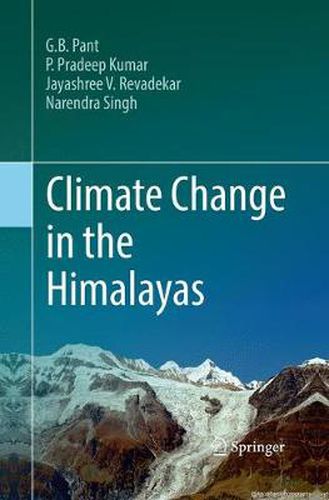Readings Newsletter
Become a Readings Member to make your shopping experience even easier.
Sign in or sign up for free!
You’re not far away from qualifying for FREE standard shipping within Australia
You’ve qualified for FREE standard shipping within Australia
The cart is loading…






This title is printed to order. This book may have been self-published. If so, we cannot guarantee the quality of the content. In the main most books will have gone through the editing process however some may not. We therefore suggest that you be aware of this before ordering this book. If in doubt check either the author or publisher’s details as we are unable to accept any returns unless they are faulty. Please contact us if you have any questions.
This book analyzes the issues associated with climate change in the Himalayas. The purpose of choosing the Himalayas as a focus is because it is a particularly fragile mountain system, highly sensitive to climate change impacts, and it contains one of the largest human populations affected by climate change. The book provides extensive data and information regarding the climate history of the Himalayas, and the current effects of climate change on Himalayan weather systems, and on human and animal populations in the region.
The book begins with an overview of global climate change with discussions of data trends and international initiatives, then segues into a history of climate changes and weather trends in the Himalayas. Weather systems of the Himalayas, both past and current, are analyzed and detailed through climate models, seasonal observations of weather fronts, and overviews of various climate scenarios. The book then discusses climate change impacts and signat
ures specific to the Central Himalayan region, where the largest effects of impacts are observed. Readers will discover analysis presented on water resources, meteorological changes, biodiversity, agriculture and human health along with perspectives of management and policy. This book will appeal to researchers studying climate science, climatology, environmental scientists and policymakers.
$9.00 standard shipping within Australia
FREE standard shipping within Australia for orders over $100.00
Express & International shipping calculated at checkout
This title is printed to order. This book may have been self-published. If so, we cannot guarantee the quality of the content. In the main most books will have gone through the editing process however some may not. We therefore suggest that you be aware of this before ordering this book. If in doubt check either the author or publisher’s details as we are unable to accept any returns unless they are faulty. Please contact us if you have any questions.
This book analyzes the issues associated with climate change in the Himalayas. The purpose of choosing the Himalayas as a focus is because it is a particularly fragile mountain system, highly sensitive to climate change impacts, and it contains one of the largest human populations affected by climate change. The book provides extensive data and information regarding the climate history of the Himalayas, and the current effects of climate change on Himalayan weather systems, and on human and animal populations in the region.
The book begins with an overview of global climate change with discussions of data trends and international initiatives, then segues into a history of climate changes and weather trends in the Himalayas. Weather systems of the Himalayas, both past and current, are analyzed and detailed through climate models, seasonal observations of weather fronts, and overviews of various climate scenarios. The book then discusses climate change impacts and signat
ures specific to the Central Himalayan region, where the largest effects of impacts are observed. Readers will discover analysis presented on water resources, meteorological changes, biodiversity, agriculture and human health along with perspectives of management and policy. This book will appeal to researchers studying climate science, climatology, environmental scientists and policymakers.